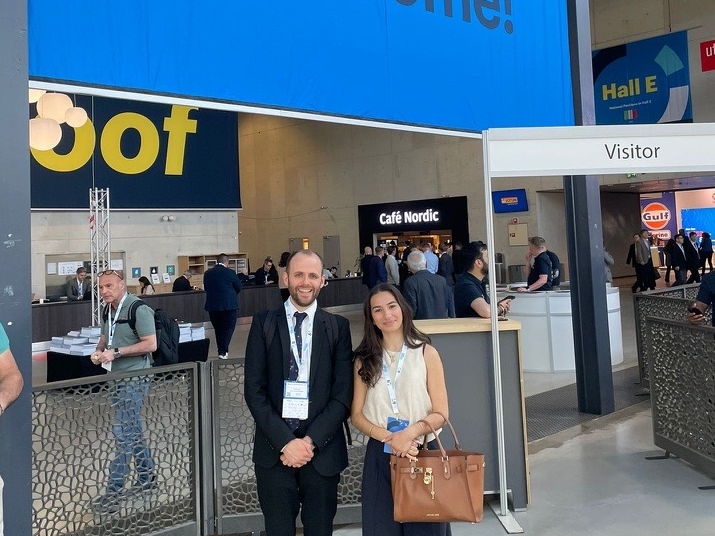Sixty years ago, Nor-Shipping set sail with its debut event. Initially launched to focus primarily on the Norwegian shipping industry, it has since evolved into a truly international forum providing a microcosm of the sector.
The event has changed massively over the last six decades. What began as a modest gathering has become a main event in the annual industry diary, now hosting over 1,000 exhibitors and welcoming around 60,000 attendees through its halls at any given time.
What’s particularly striking is the makeup of those 60,000 attendees. While the Scandinavian presence remains strong, there is a notable and growing representation from China, South Korea, Japan, Singapore, and India – an example of Martin Stopford’s “Westline” theory in action.
The exhibition halls illustrate how both Nor-Shipping and the global maritime industry are evolving. The usual suspects are still present – the yards, classification societies, and suppliers. But to truly appreciate how far the industry has come, one only needs to imagine explaining to delegates in 1965 that future halls would feature rotor sails, artificial intelligence-powered fridges, and even a robot promoting the next event.
Unsurprisingly, decarbonisation was one of the key topics dominating the event. The side events and expos are rightly highlighting the impact of the surging cost of carbon, which will impact those across the value chain who risk being caught. The alternative fuels debate continues to captivate delegates as they discuss across panels and over drinks which pathway will prevail. This debate is acute as the consequence of the latest MEPC 83 swirls around the arena with fingers crossed for the IMO’s extraordinary session in October.
At this year’s event, it felt that digitisation is (thankfully) becoming less vague as we move from theory to practical implementation. There’s a focus on data standardisation and transparency and applying it to find efficiencies and assist in reporting. Meanwhile, with the number of stands that promised the latest in digital technology and data, it’s clear that momentum from the previous Nor-Shipping’s rush to champion innovation is still strong.
That said, geopolitics “trumps” all. In that sense, the tonality of the conference seems to have shifted. It seems that many panellists were on standby for the latest policy decision, which was announced on social media. Shipping is firmly in the sights of some policymakers who are looking to use our sector as a means to an end.
Nor-Shipping 2025, like Nor-Shipping 1965, follows a period of shipping that enjoyed unprecedented returns amid periods of “geopolitics on steroids”. It's clear that, while some things have changed unrecognisably, those trends persist. From the impact of the Suez Canal closure in the 1950s to the disruption of tariffs and dark fleets today, geopolitics still have the most significant impact on supply, demand, and freight rates.
The knowledge hub that is Nor-Shipping brings all these trends to the forefront over an intense and inspiring four days. A real moment of focus for anyone working in maritime to explore the impact of these new trends and regulations combined with forces that have dominated our sector since the very beginning. Gathering at events like Nor-Shipping help us to understand, anticipate, and prepare for the future.
As the post-event energy ripples through our offices, we’re all in agreement – Nor-Shipping 2025 has undoubtedly set a new benchmark for future events. Some might even say it has become a kind of manifesto for the maritime industry! With the richness of perspectives and ideas shared across the value chain, we’re more eager than ever to see what Nor-Shipping 2027 will bring.

Please choose which cookies you want to consent to.